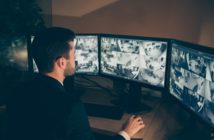New research is revealing how important the skills of camera operators are in the effective use of CCTV systems.
Reducing alcohol-related violence and other disorder around licensed venues in late night entertainment areas is a reason nominated by most local governments in Australia for installing a CCTV system. Despite this, CCTV systems are still overwhelmingly being used mainly to provide evidence to the Police for successful prosecutions.
According to recent research, part of the reason for this is that we don’t have the techniques to measure how effective CCTV is and the range of ways in which it works. This has led to a grab-bag of evaluation projects with researchers looking at a range of different applications of CCTV and methods to measure its effectiveness.
An Australian study recently found that 40 per cent of all assaults seen on the CCTV system in Cairns, Queensland were interrupted by camera operators dispatching street security personnel to intervene, thereby preventing more severe injuries arising from these assaults.
Previous evidence from the UK suggests CCTV systems which use real-time communication between camera room operators and police or street security patrols limits violence due to rapid deployment of a physical response. With the average cost of an assault related hospitalisation in Australia upwards of $16,000 (2005), there is substantial savings to the community in reducing assault and alcohol related violence.
Furthermore, there is an opportunity to enhance camera operator skills to increase response times, and to further prevent injuries to patrons and bystanders.
More than 16,000 academic articles have been published on CCTV evaluation. Many of these talk about technological solutions, but few have looked at the human performance of the operators within the monitoring room. The first of these was a landmark study by Norris and Armstrong (1999) which documented management practices, identified reasons monitoring is initiated and found the existence of bias in monitoring.
Since then there has been a growing awareness among researchers about the complexities within CCTV systems, but finding and applying effective tools to improve the quality of operator performance has not been achieved in a systematic way. Realist evaluation may offer the best method to systematically research ways to measure and improve the effectiveness of monitored CCTV systems, including performance of camera operators.
The Realist Evaluation model states that outcomes are the function of different mechanisms operating within a localised, specific context. Nevertheless all monitored, urban CCTV systems have some similarities in contexts. Camera room staff, operations and communication are all key, particularly in the accuracy of data recorded by the operators.
In addition, continuous improvement in all these areas through measurement and training are vital. Possibly the most important factor is a precise definition of the outcomes the system is trying to achieve. This involves management, staff and the community, as well as external stakeholders like police to clearly describe what the system is supposed to target.
Measuring CCTV’s effectiveness in contributing to a safer community, or place-based solutions can be done if:
• Organisations know what they are trying to achieve
• They clearly define and communicate this to camera operators and external partners
• They apply continuous quality management principles of auditing and training.






